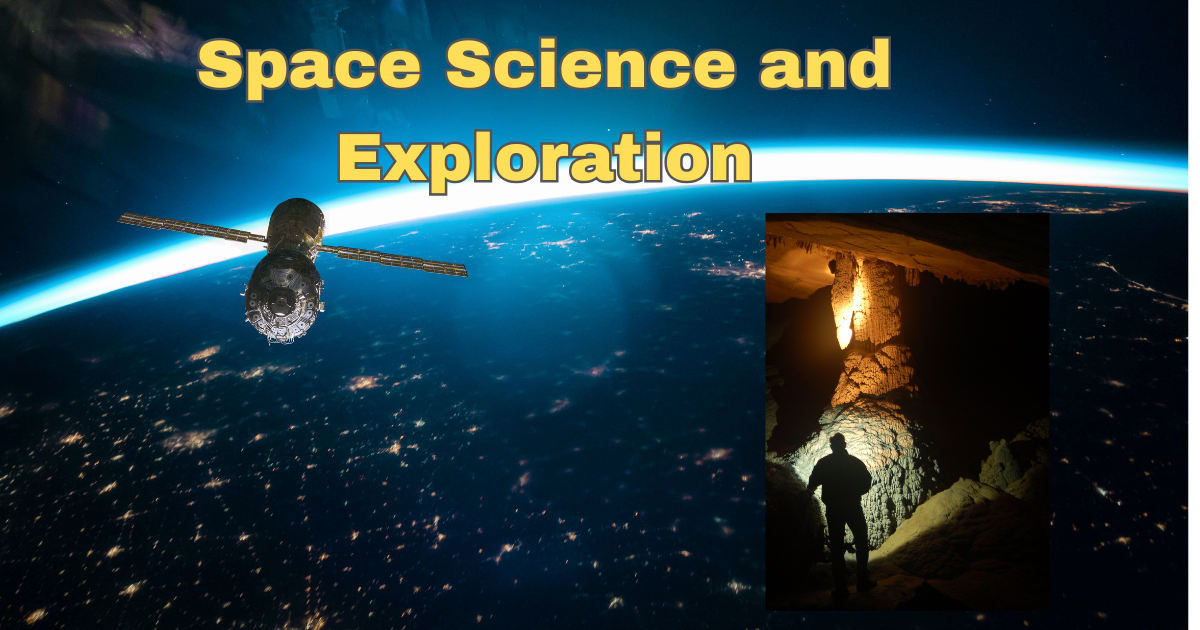Space Science and Exploration: Inventions That Took Us Beyond Earth Space travel has given us a wealth of knowledge, which has in turn helped us create inventions and technologies that have made human life easier and helped us learn more and explore further into the universe. The technology used to get mankind to space was revolutionary NASA and the Jet Propulsion Laboratory have truly changed the world for the better.
Space Science and Exploration
The space science exploration program encompasses research in areas like astronomy, astrophysics, planetary and earth science, atmospheric sciences, and theoretical physics. Balloons, sounding rockets, space platforms, and ground-based facilities support these research efforts. A series of sounding rockets are available for atmospheric experiments.

Humans have always looked at the heavens and wondered about the nature of the objects seen in the night sky. With the development of rockets and the advances in electronics and other technologies in the 20th century.
Although the possibility of exploring space has long excited people in many walks of life, for most of the latter 20th century, only national governments could afford the very high costs of launching people and machines into space. This reality meant that space exploration had to serve very broad interests, and it indeed has done so in a variety of ways.
AstroSat
AstroSat is the first dedicated Indian astronomy mission aimed at studying celestial sources in X-ray, optical, and UV spectral bands simultaneously. The payloads cover the energy bands of ultraviolet. One of the unique features of the AustroSat mission is that it enables the simultaneous multi-wavelength observations of various astronomical objects with a single satellite.
Mars Orbiter Mission
Mars Orbiter Mission is ISRO’s first interplanetary mission to planet Mars with an orbiter craft designed to orbit Mars in an elliptical orbit of 372 km by 80,000 km. The primary driving technological objective of the mission is to design and realize a spacecraft with a capability to perform an earthbound maneuver (EBM). Autonomous fault detection and recovery also becomes vital for the mission.
Chandrayaan-1, India’s first mission to the Moon, was launched successfully on October 22, 2008, from SDSC SHAR, Sriharikota.
Chandrayaan-2 is configured as a two-module system comprising an Orbiter Craft module (OC) and a Lander Craft module (LC) carrying the Rover developed by ISRO.
Chandrayaan-3—This is a follow-on mission to Chandrayaan-2 to demonstrate end-to-end capability in safe landing and roving on the lunar surface. It consists of a lander and rover configuration.
Aditya-L1—This is a satellite dedicated to the comprehensive study of the Sun. It has 7 distinct payloads, all developed indigenously.
Inventions That Took Us Beyond Earth:
This week has been a big leap for science. The 21st century appears to be on the precipice of a new dawn of advancement. with the evolution of knowledge and the next generation of world-changing discoveries within reach. NASA has invented all sorts of technology to solve the peculiar problems of space exploration. In the 1950s and early 1960s, it created the revolutionary three-axis stabilization control design that enables satellites to point their antennas, instruments, and solar panels with precision.
The list of inventions is certainly long, but if we have to single out a few favorites, these 10 would top the list.
- Memory foam
- Anti-corrosion Coating
- ArterioVision
- Cochlear Implants
- Scratch-resistant Eyeglass Lenses
- Remediating the environment:
- Insulin Pump
- Lifeshare
- Charge-couple Device
- Water Filters
Conclusion
In this article we discussed space science and exploration: inventions that took us beyond Earth. The space science exploration program encompasses research in areas like astronomy, astrophysics, planetary and earth science, atmospheric sciences, and theoretical physics. And it indeed has done so in a variety of ways. The element is incredibly rare on Earth, but it seems to be fairly prevalent on the moon.
